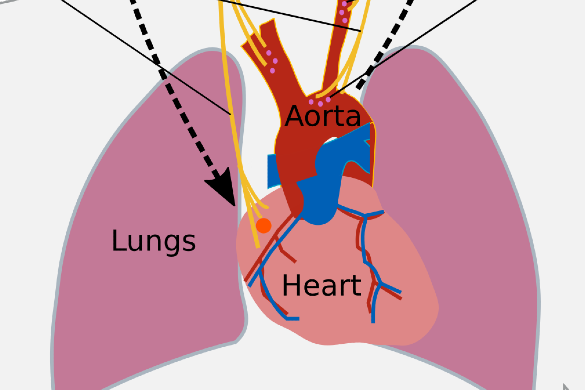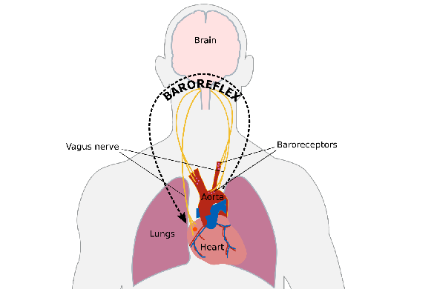
Phil Clemson, Post Doc researcher at the Signal Processing Group, provides an overview of his recent joint research relating to novel analysis techniques related to the body's cardiovascular system. The full paper was published in Frontiers in Network Physiology.
Summary
The body’s cardiovascular system is regulated by a complex network of interactions which take place at all scales, from the microscopic level of cells to the macroscopic level of whole organs and blood vessels. The response of the heart rate to changes in blood pressure is one such interaction. This interaction is modulated by the nervous system and it can therefore be used to diagnose and monitor diseases that affect or relate to the nervous system such as diabetes mellitus and obstructive sleep apnea.
Importance of the research
Measurement and interpretation of the heart-blood pressure interaction is not trivial. Current techniques involve observing relative changes in oscillations related to the breathing cycle in both the heart rate and the blood pressure. However, it has been argued that the breathing oscillations observed in the heart rate are modulated by mechanisms other than this interaction. To investigate this we applied novel analysis techniques that were developed for the time-dependent and nonlinear nature of the cardiovascular system. These revealed that the breathing oscillations observed in the heart rate are also modulated by a mechanism in the brain. This suggests that the current techniques used to measure the heart-blood pressure interaction and the associated changes in the nervous system are unreliable. Furthermore, using the same techniques we discovered a new biomarker hidden within the subtle variations in the blood pressure. This biomarker provides an alternative way to measure the regulation of the cardiovascular system by the nervous system for use in diagnostic medicine and clinical studies. The technique relies entirely on the measurement of a patient’s blood pressure, without the need of a separate electrocardiogram as in the case the measurement of the heart-blood pressure interaction. This therefore has the potential to transform simple blood pressure monitors into devices that measure the health of a patient’s nervous system.
Diagram of the heart-blood pressure interaction (the baroreflex)

What comes next?
Validation studies are now required to assess the newly-discovered biomarker. If proven to be effective then this could give rise to a new generation of medical devices and health monitors, which would revolutionise patient screening for health conditions that could previously only be diagnosed using more expensive and invasive techniques.
Please review the whole paper here.